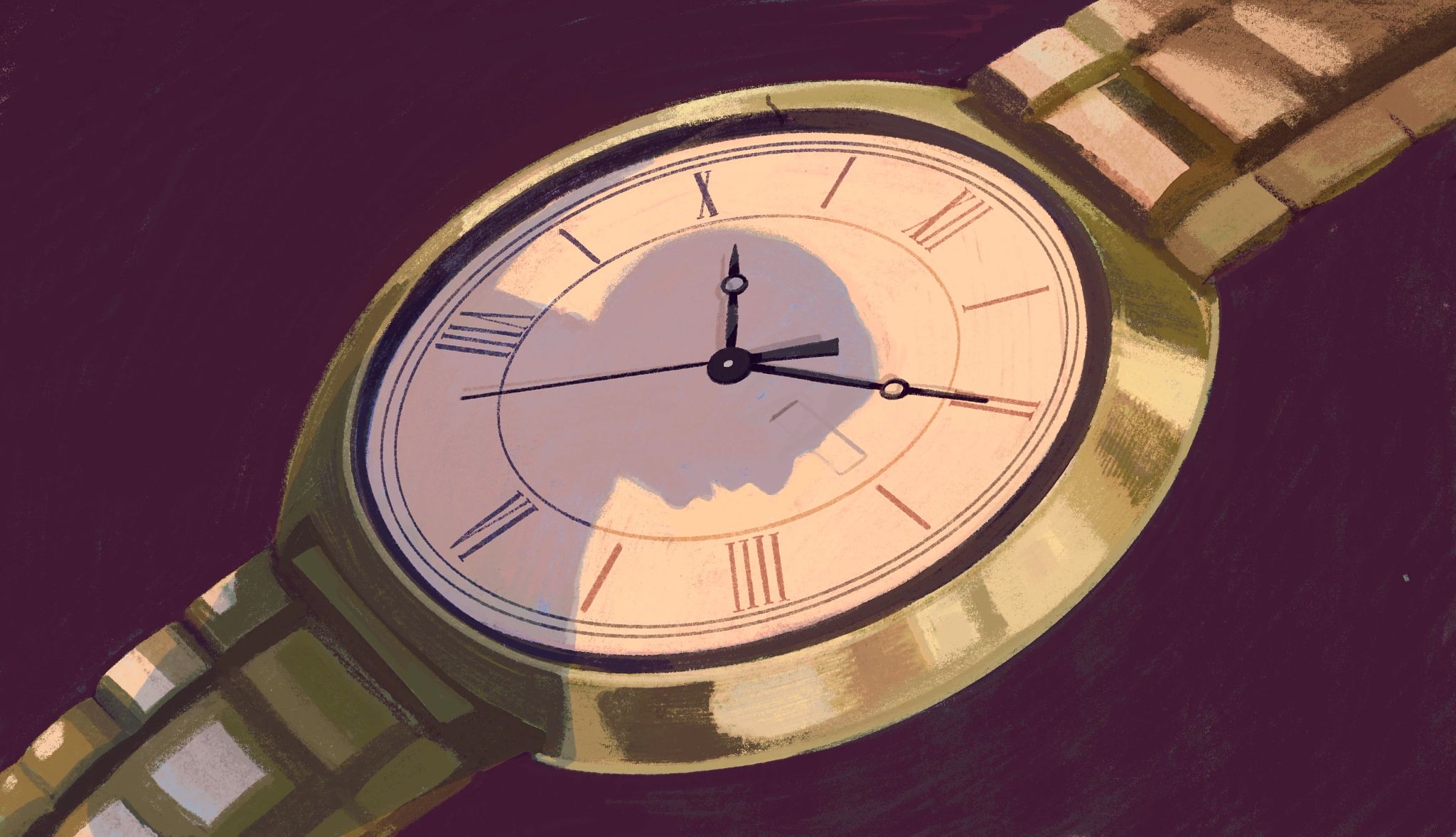AARP Hearing Center


Because I was born before the Kennedy administration, the nurse at my recent annual checkup handed me a sheet of white paper with a simple circle drawn on it and asked me to create a clock face that indicated the time was 11:40.
Kindergarten was the last time I drew the hands on a clock, and for the life of me, I couldn’t remember if it was the shorthand that pointed to the hour and the long hand the minutes or vice versa. In the end, I decided to just go for it — and I ended up drawing a clock that read 7:55 instead of 11:40.
But here’s the irony of the situation: I was wearing two watches on my left wrist at the time, both analog. Whether you’d have called it cheating or using my ingenuity, I could have just snuck a look at either to figure out the answer. Still, the point of this story isn’t about cognitive decline. It’s about Why Am I Wearing Two Watches?
The first is a watch given to me by my husband, daughter and son-in-law for my 60th birthday — it’s lovely, it tells the time accurately within a minute or two, and I cherish it. The second is an old Timex that my father wore every day, a watch that, although I’ve tried to repair it, no longer works. But I started wearing it anyway when my son-in-law Matt was diagnosed with a rare cancer during the pandemic.
Call my father’s watch what you will — an amulet, a talisman, a conversation starter — because people are always asking me about this two-watch trend I’ve started. I found it comforting to have this piece of my father with me during this dark period. Matt, then 30, and our daughter Alliana, 28, had been married for barely a few months when this double whammy hit.
Due to the pandemic and Matt’s weakened immune system, we could only visit them outside, at a three-foot distance, for a few minutes at a time. It was excruciating seeing them in pain, not being able to hug or comfort them. Matt unsuccessfully underwent dozens of rounds of chemo. And then dozens more. His odds looked grim until he was offered the chance to try a then newly approved immunotherapy procedure, CAR-T, which saved his life. It’s a story with a happy ending, and potentially a promising ending for the hundreds and eventually thousands more cancer patients who might be saved by CAR-T. But during the uncertain, unspeakable 18 months that led up to Matt’s recovery, I would cup my hands tightly around my wrist and my father’s watch, as if somehow, my father could pull off a miracle for Matt, a miracle that Dad couldn’t pull off for himself when he died just before his 76th birthday of complications from Type 1 diabetes.
The large round face of the watch, the Roman numerals, the cool feel of the watchband against my skin were all somehow reassuring, and I clung to them for minutes at a time. I couldn’t see my father’s face in the watch face, but I could see him in my mind’s eye, nodding as if marking the time with me, the time it would take to make Matt better.


































































You Might Also Like
Romance Novelist Celebrates Love Over 50
Author of 'Flirting With 50' found her own Mr. Right when she least expected it
A New Life for Once-Doomed Animals
Clare Staples left a glamorous career to rescue mustangs, horses and a few lucky others